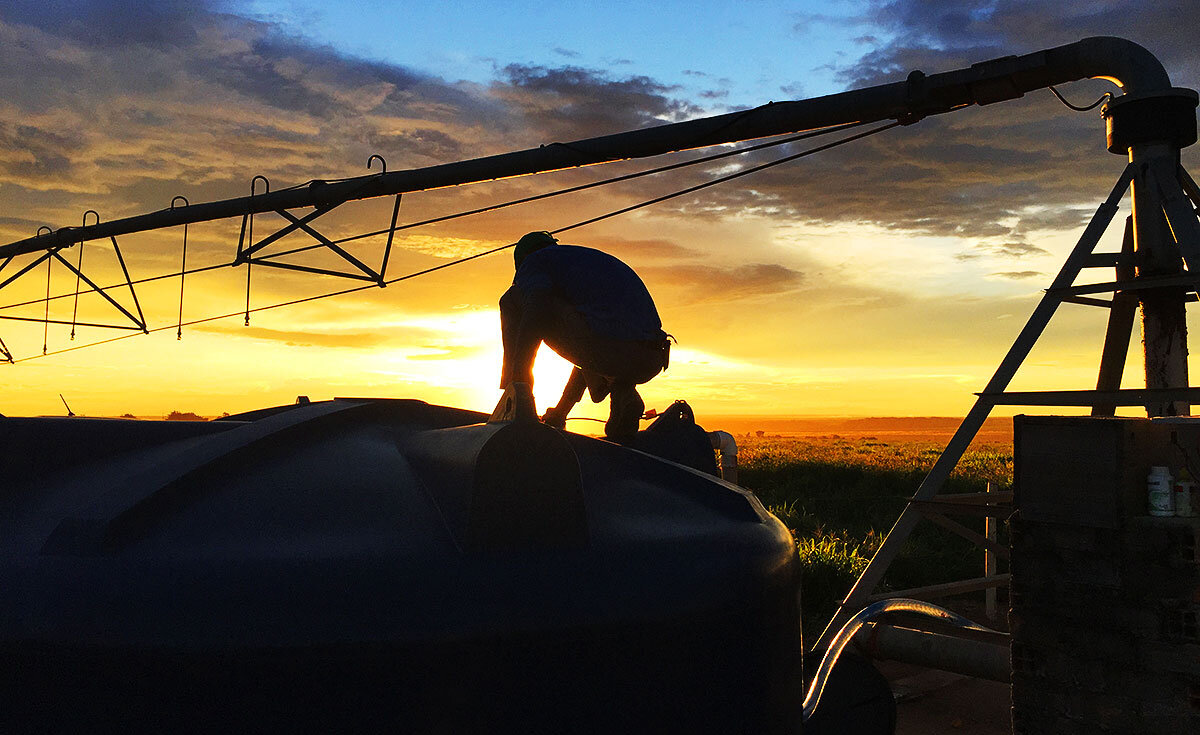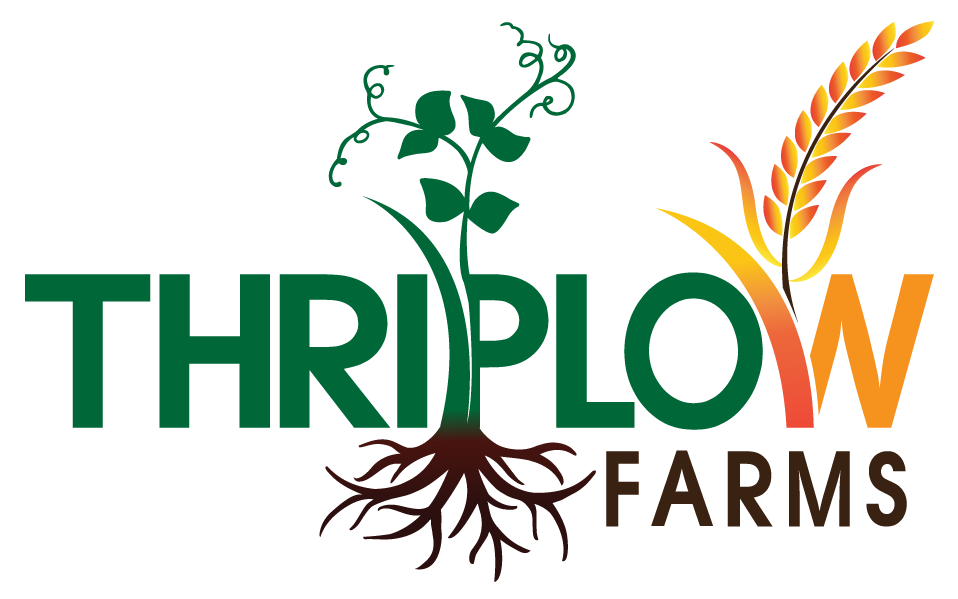Day 69(ish) - Some data & final thoughts
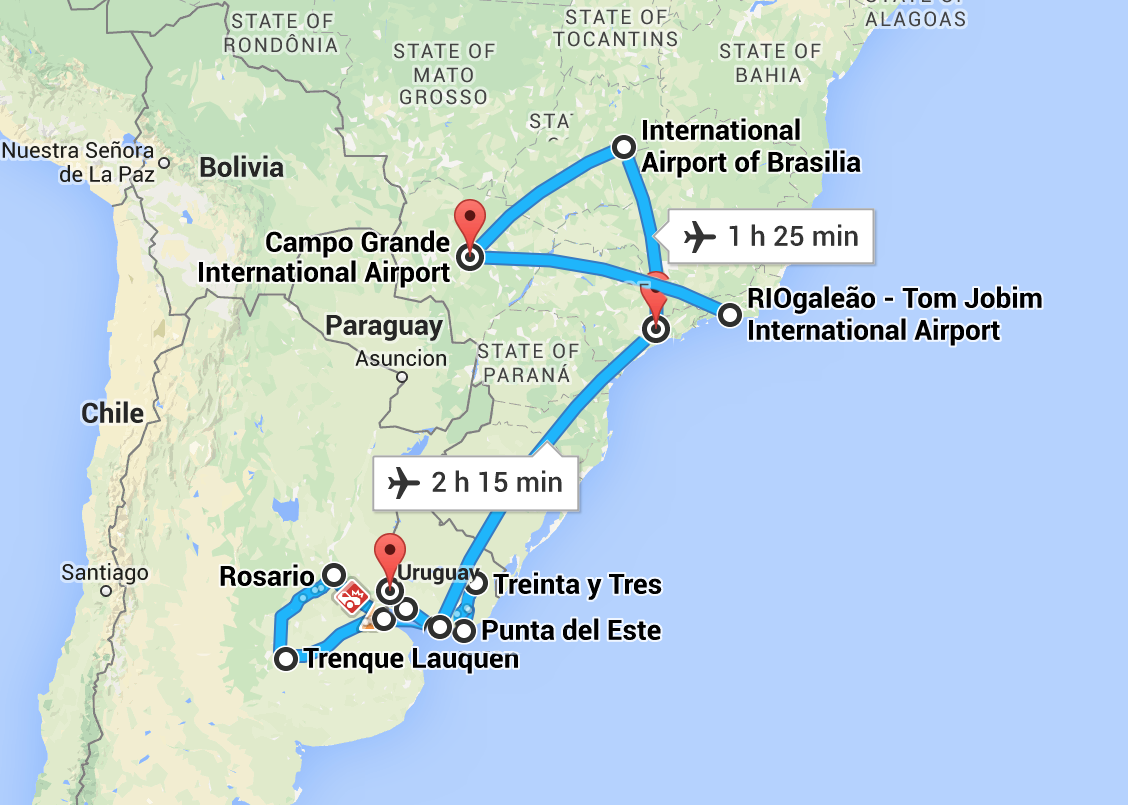 This is roughly speaking where I've travelled. It's a little abbreviated in Brazil since that got too complicated to map easily. My time in South America is almost up, but there are a few more things to say, and random pictures to insert.
This is roughly speaking where I've travelled. It's a little abbreviated in Brazil since that got too complicated to map easily. My time in South America is almost up, but there are a few more things to say, and random pictures to insert.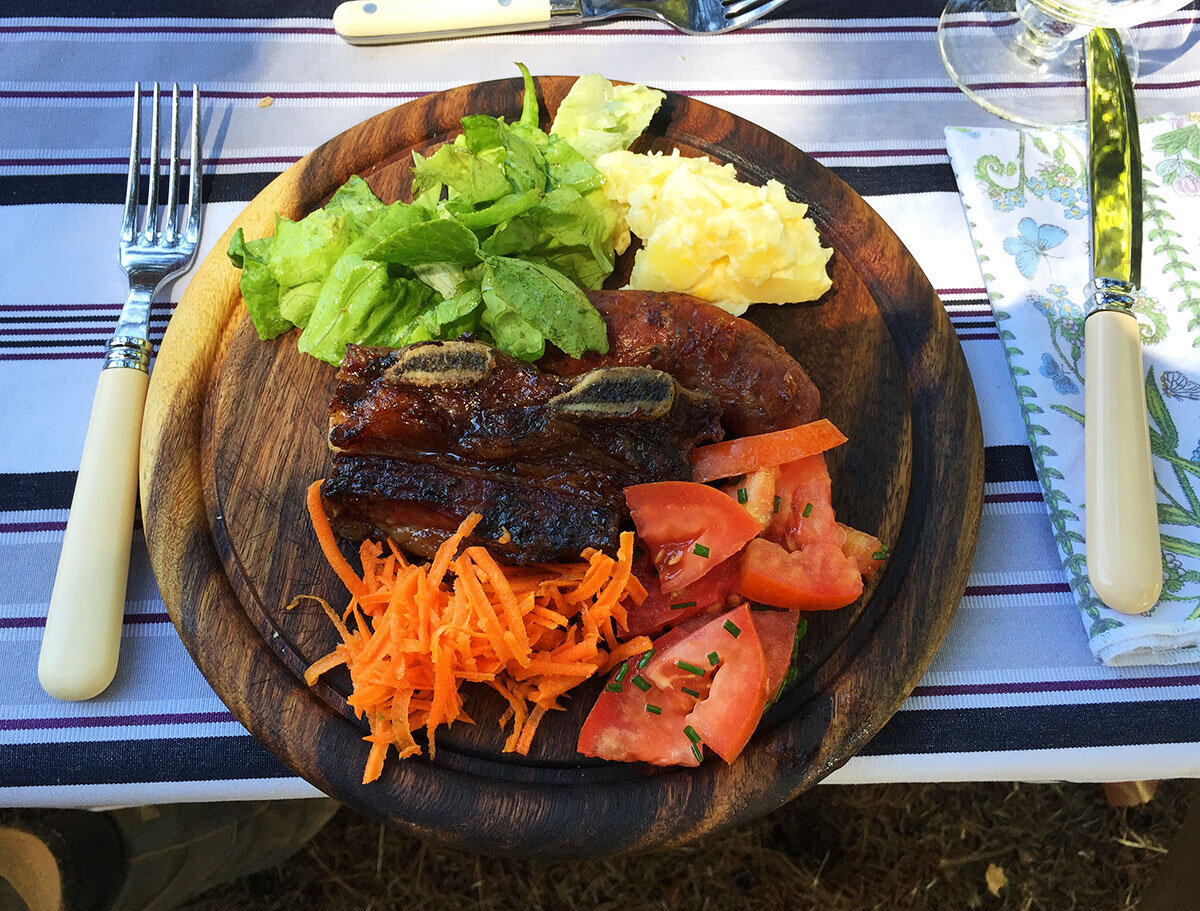 I met a guy from Embrapa yesterday who is running a program near Brasilia where they are comparing conventional and Organic dairy grazing systems. It’s only been going for three years, and I haven’t seen the data (he will email it to me apparently), but they are finding hugely more efficient fertiliser use under Organic management. At the start of the trial both treatments were given the same amount of NPK fertilisers. In the conventional system these came from urea, triple super phosphate and potassium chloride. The Organic sources were animal manures and soft rock phosphate.
I met a guy from Embrapa yesterday who is running a program near Brasilia where they are comparing conventional and Organic dairy grazing systems. It’s only been going for three years, and I haven’t seen the data (he will email it to me apparently), but they are finding hugely more efficient fertiliser use under Organic management. At the start of the trial both treatments were given the same amount of NPK fertilisers. In the conventional system these came from urea, triple super phosphate and potassium chloride. The Organic sources were animal manures and soft rock phosphate. In each of the three years there has been a 20-30% yield penalty (measured by tonnes of dry matter produced per hectare) with the Organic management. However, the critical point is that every year the conventional fertiliser must be reapplied in the same amounts, whereas the Organic field is maintaining its yields with only what was put on at the beginning of the trial. How long will that go on for? Who knows, but already after three years it’s a very interesting result. Whether it could be more profitable to grow crops like this, even without an Organic premium, I couldn’t say; it’s going to depend a lot on the value of the land you’re farming. But it does make you wonder how much of the artificial fertiliser we apply is just being wasted.
In each of the three years there has been a 20-30% yield penalty (measured by tonnes of dry matter produced per hectare) with the Organic management. However, the critical point is that every year the conventional fertiliser must be reapplied in the same amounts, whereas the Organic field is maintaining its yields with only what was put on at the beginning of the trial. How long will that go on for? Who knows, but already after three years it’s a very interesting result. Whether it could be more profitable to grow crops like this, even without an Organic premium, I couldn’t say; it’s going to depend a lot on the value of the land you’re farming. But it does make you wonder how much of the artificial fertiliser we apply is just being wasted.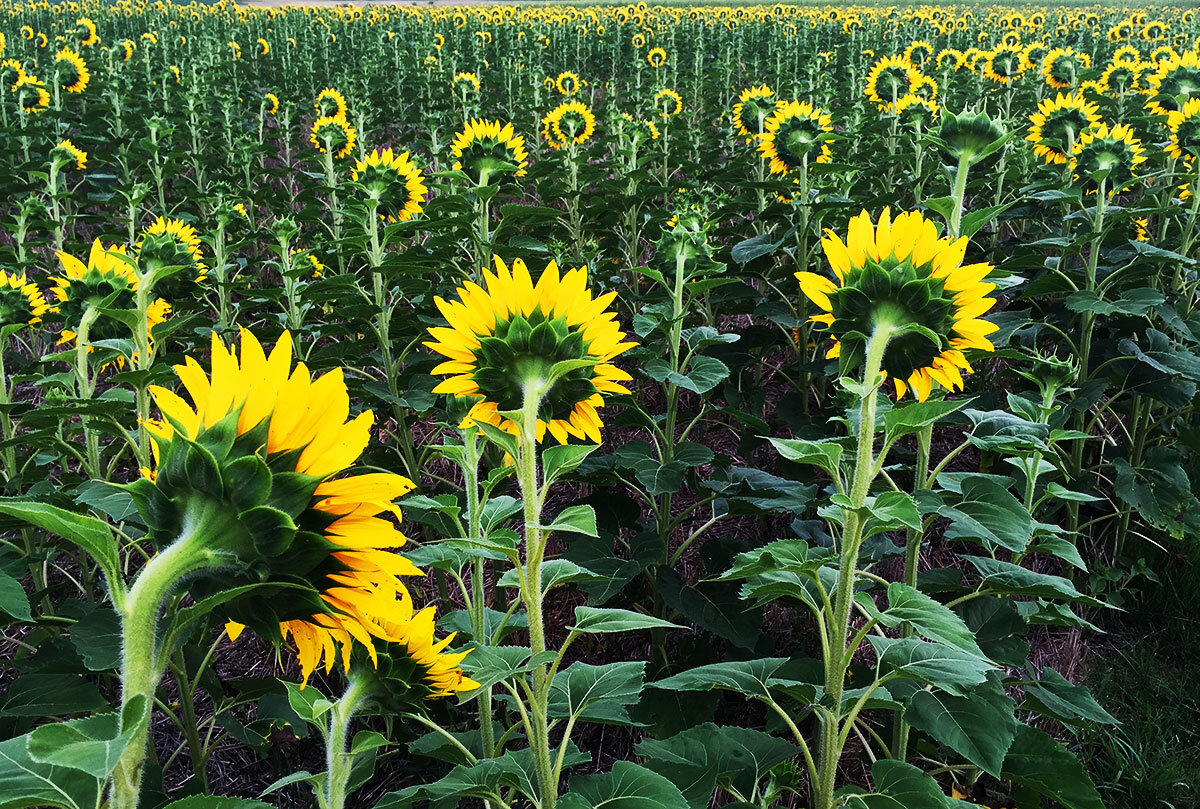 At a previous Embrapa meeting I was given some scientific papers to take home, and have only just had a chance to read them. One is particularly worthwhile, it’s called “Integrated crop-livestock system in Brazil: Toward a sustainable production system”. The data comes from a 16 year experiment comparing these treatments,
At a previous Embrapa meeting I was given some scientific papers to take home, and have only just had a chance to read them. One is particularly worthwhile, it’s called “Integrated crop-livestock system in Brazil: Toward a sustainable production system”. The data comes from a 16 year experiment comparing these treatments,
- CS - Conventional System using disc cultivation, growing soybeans with a winter cover crop
- NTS - No-Till System, growing a soya and maize rotation with winter cover crops
- ICLS - Integrated Crop-Livestock System growing two years of soya & cover crop and two years of pasture
- PP - Permanent Pasture
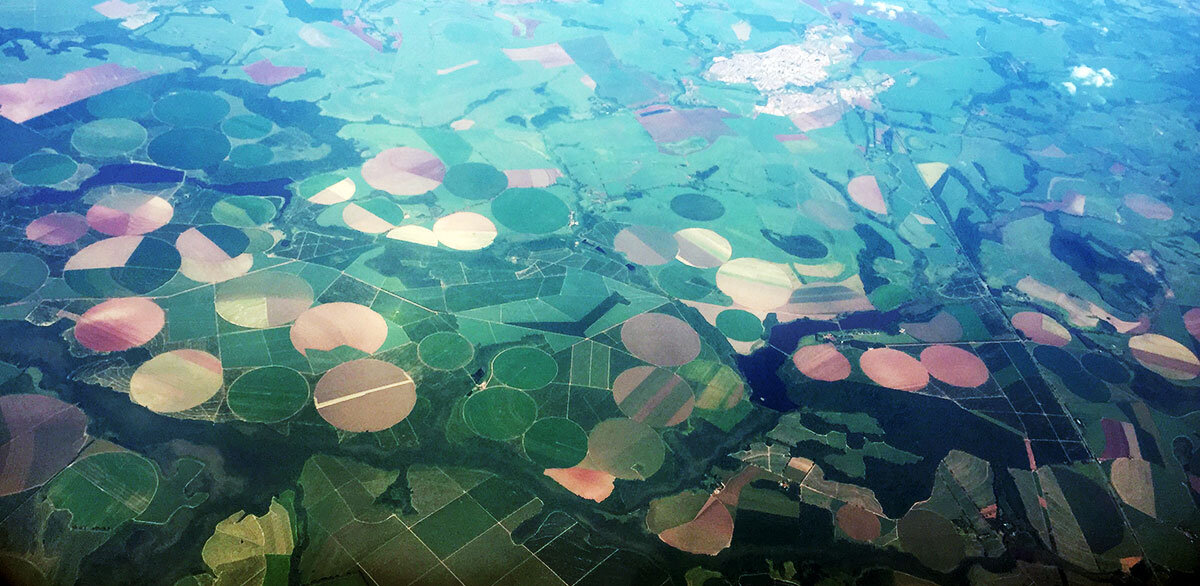 Here are some of the results that I think are notable. I’ve tried to keep it slightly readable.
Here are some of the results that I think are notable. I’ve tried to keep it slightly readable.
- “the ICLS system treatment yielded soybean production that was greater than or equal to that of CS and NTS. This higher efficiency of ICLS system may be related to availability of P in organic form” - this tallies with the experimental results found by Embrapa Cerrados
- “Systems with livestock grazing had significantly greater MWD [this is a measure of how stable the physical soil structure is] compared to other systems (ICLS: 4.12mm, PP: 4.93mm, CS: 2.19mm, NTS: 3.18mm) … Ultimately, soils with greater aggregation characteristics are considered of better quality than similar soils with weaker aggregation, mainly because TOC [Total Organic Carbon] becomes physically protected in stable aggregates.” - see the famous Slake Test
- “Concentration of TOC, TOC storage, and POC stock were increased under grazing by livestock at the following order: CS<NTS<ICLS<PP … The labile fraction of organic matter was also greater in ICLS and PP, than in NTS indicating greater energy flux in the soil system. Greater SOM lability was attributed to the presence of the forage, which adds a greater amount of organic matter to the soil than cropping alone. Moreover, there is a continuous exudation of substances from grass roots to the soil during growth which is stimulated during grazing.” - Not very surprising. But it must be noted that of all the systems, it was the NTS which actually lost the most carbon overall. CS was stable, and the other two increased.
- Total microbial activity was greater in the order you would expect, PP>ICLS>NTS>CS - I’m paraphrasing here a bit.
- “Density and taxonomic richness of the invertebrate macrofauna [i.e. worms, beetles etc] community in soil differed among management systems. Lowest values were observed in CS, while ICLS was equivalent to that of NTS and PP and greater than that of CS … Soil macroinvertebrates perform numerous essential functions, including decomposition, nutrient cycling, SOM mineralisation, soil-structure modification, atmospheric-composition regulation, and biological control of pests and diseases.” - I think it’s fairly obvious by this point what direction this paper is heading in…
- Hold on, this is a long one: "Weed community analysis showed that areas without pasture and grazing generally accumulated more weed mass than areas that were periodically or continuously grazed. The area of soil covered by weeds was 87% greater in CS compared to the average of the other treatments. Generally, areas that were continuously or periodically grazed by livestock had fewer weeds than areas where only grain crops were grown. Livestock grazing also affected seed germination: weed seedlings from treatments that included grazing took longer to germinate and emerge from from the soil surface. Regardless of the presence or absence of tillage, crop-only systems exhibited larger areas of soil covered by weeds." - Phew. I've never actually seen this information in a scientific context, and the figure they come up with (87%) is huge. Very interesting.
- "Occurence of Rotylenchulus reniformis [a parasitic nematode pest] differed significantly among management systems, with a much larger population in CS [1500x more than the next highest]"
- "In years with ample rainfall, soybean production was equal in the three grain-production systems. In years with poor rainfall distribution, with water deficits, ICLS and NTS exhibited smaller productivity losses compared to CS. In 2010/11, for example, CS yielded only 60% of crop production in other systems." - No big shock here, there's a reason all the really dry places in the world have gone to no-till. Although it's amazing they get droughts here when it rains perhaps 1500mm in the growing season. In the tropical heat it doesn't take long for it all to evaporate.
 I've found this to be a useful paper, and to me it suggests that the oft-heard fear that having animals in a system is a drain on nutrients/soil fertility is not just unfounded, but actively wrong. Now who wants to lay some water pipe?
I've found this to be a useful paper, and to me it suggests that the oft-heard fear that having animals in a system is a drain on nutrients/soil fertility is not just unfounded, but actively wrong. Now who wants to lay some water pipe?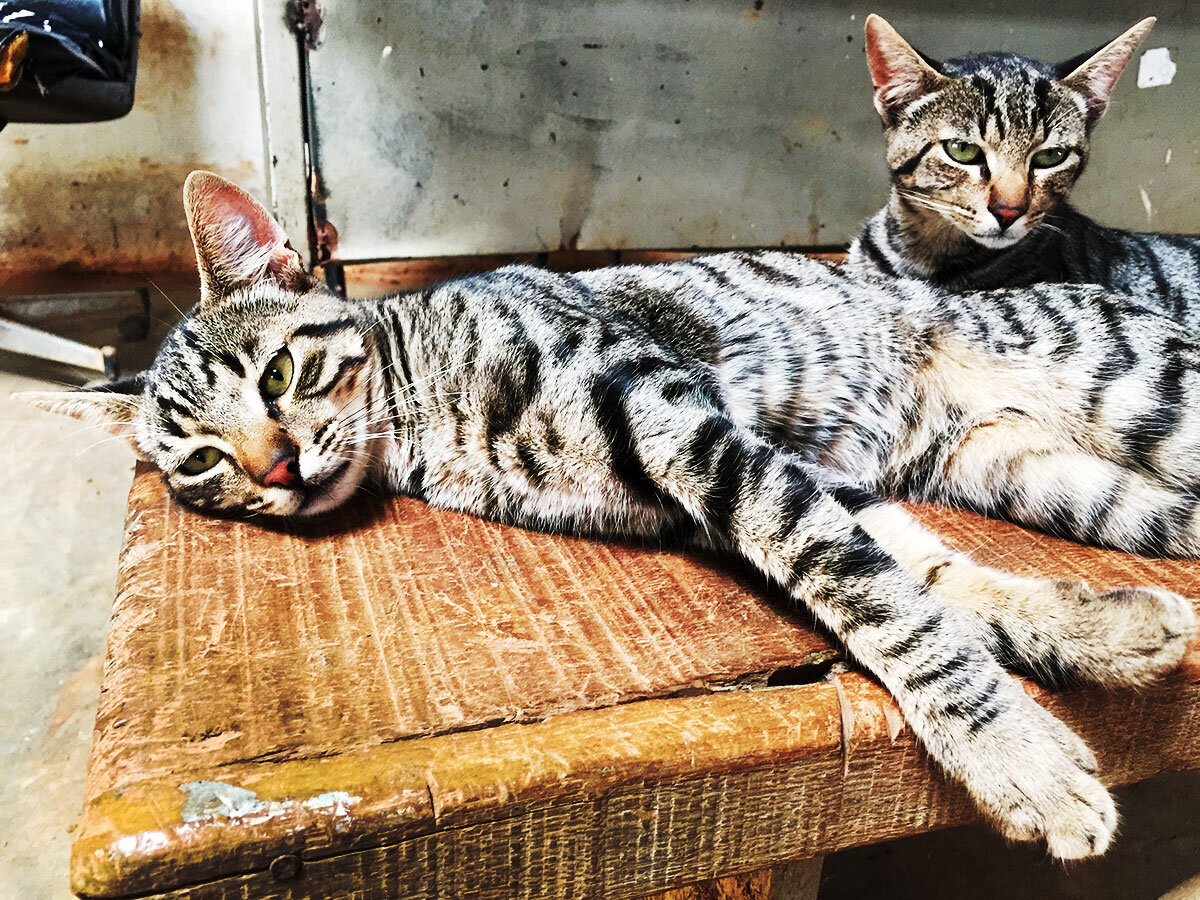 It's certainly been an interesting trip, but I think I've run out of steam. The problem is that I've seen enough of the details - just look at how different the first blog posts from NZ are - and it is becoming increasingly difficult to find novel concepts. Particularly here in South America, the diversity in farming methodologies seems very limited, and largely defined by what area/climate you happen to be in. There could be two explanations for this: lack of imagination, or perhaps the farmers are more switched on to the research, and unlike back at home, they are all doing the "right" things already. It's difficult (impossible) to tell, but I haven't found the Gabe Brown/Coin Seis sort of guy who is trying something totally different... Well I do actually know one, the problem was that he refused to let me visit! The others are probably hiding somewhere not telling anyone about it. That's a job for a future traveller.It's been great fun, but this may be the last Nuffield post. Ciao.
It's certainly been an interesting trip, but I think I've run out of steam. The problem is that I've seen enough of the details - just look at how different the first blog posts from NZ are - and it is becoming increasingly difficult to find novel concepts. Particularly here in South America, the diversity in farming methodologies seems very limited, and largely defined by what area/climate you happen to be in. There could be two explanations for this: lack of imagination, or perhaps the farmers are more switched on to the research, and unlike back at home, they are all doing the "right" things already. It's difficult (impossible) to tell, but I haven't found the Gabe Brown/Coin Seis sort of guy who is trying something totally different... Well I do actually know one, the problem was that he refused to let me visit! The others are probably hiding somewhere not telling anyone about it. That's a job for a future traveller.It's been great fun, but this may be the last Nuffield post. Ciao.